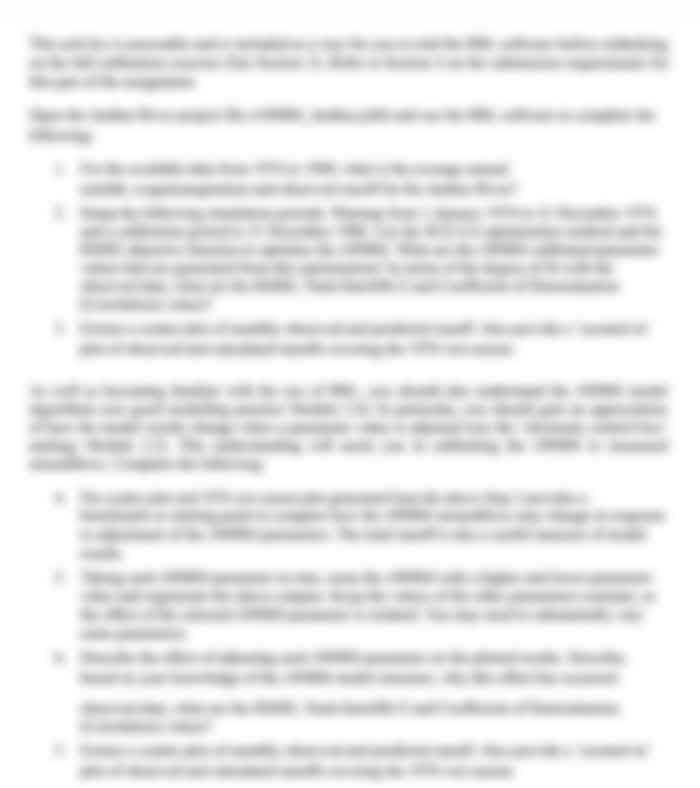BUSM1734 RISKANALYSIS:RISKPROBLEMINVESTIGATION ASSESSMENT
- Subject Code :
BUSM1734
AIM
This is a group (3-4 students per group) assignment.It is designed to foster collaborative discussion tofacilitate the appraisal of risk problems, in particular business risk situations, from a multi-dimensionalperspective.Its focus is to reinforce the notion that risk is context-specific and that risk management ispredicated on a socially constructed reality of the world.The rigor of risk analysis, as such, needs to beestablished using a holistic approach that allows the analyst to see not just the trees but also the forest.Thisisachievedbyaskingstudentstousethedynamicsystemanalysistechniquetomodelarisksituationor risk management problem in business.Its aim is to train students develop the skills of applying thesystem technique innovatively to diagnose, analyze, and solve risk problems in business operations.Emphasisisplacedonengenderingcreativethinkingthroughthecombineduseofsystemthinkingwitharangeofrelatedconcepts,suchaspowerfield,residualuncertainty,paradoxtheory,andstrategicfit.
PROBLEMSELECTION
Selectabusiness-relatedriskproblemwithwhichone(ormore)ofyourgroupmembersisfamiliartocompletetherequirementsofthetasksstipulated.Someexamplesofbusiness-relatedriskproblemsare:
- Stock-outataretailoutlet
- Operationsdisruptionsatawarehouse
- Orderfulfilmentfailuresat arestaurantoracaf
- Qualitybreachesinaproductionfacility
- e-Commerceorderfulfilmentfailuresofanonlineretailer
- Cybersecurityfailuresatamajorinstitution
Obviously, the above list is not exhaustive.Feel free to come up with ideas and discuss with your CourseCoordinator,whoisalwaysopentosuggestions.
Note:Whatever problem you may select, you should ground it in a context to enable you to conduct ameaningful and realistic investigation and analysis.For instance, if you select stock-out at a retail outlet,you should base the stock-out problem on a specific store you have information, or are able to obtaininformation(e.g.,astorewhereyouareworkingpart-timeatorhadworkedpreviously)from.Therefore,youshould discuss among your group members to select a business-related risk problem with which one (ormore)of your groupmembers isfamiliartocompletetherequirementsof thetasks stipulated.
Pleasereachouttoyour CourseCoordinator toexplore whatyouwouldliketoinvestigate.
TASKS:
- Describe, with the aid of a diagram (a rich picture), the context in which the problem beinginvestigatedisIndicatehowyouhaveobtainedtheinformationneededtounderstandtheriskcontext.
Note: This task helps you to identify the vulnerable points or hidden risks embedded within thecontext where the risk problem being investigated could erupt.Your description, therefore,should include: 1) the factors, which, arguably, would be the plausible sources of risk; and 2)theinteractionsbetweenthesefactorswhichcouldchangetherelationaldynamicsleadingtofurther developmentoftheproblem.
Weightforwrittensubmission:(13%)
- Using the technique of systems modeling, characterize the problem situation selected as acomplexdynamicsystembytracingtheinterdependencyrelationshipsbetweenthekeyvariablesandnurturingconditionsunderwhich theriskwouldmost likely
Note:Thistaskhelpsyoutotrackthecause-effectrelationshipsbetweenthekeyvariablesandtheirnurturingconditionsthatcouldleadtotheoccurrenceoftheriskproblembeinginvestigated.You should either provide the evidence or explain the logic of all the identified causal linksbetweenthekeyvariablesandnurturingconditions,ifthoselinksarenotintuitivelyapparent.
Weightforwrittensubmission:(20%)
- Next,basedonthesystemdevelopedtorepresenttherisksituation,systematicallyassessthelevelof control, the level of residual uncertainty, likelihood of occurrence, and change potentialembedded in each of the key variables and nurturing conditions perceived to give rise to the risk
Note:Thistaskallowsyoutoassessthecriticalityofthekeyvariables,thesourcessparkingthechainof events leading to the occurrence of the risk problem being investigated.You should,therefore,justifyyourassessmentofeachofthekeyvariablesidentifiedtodevelopacomprehensiveanalysis oftheir comparativecriticality.
Weightforwrittensubmission:(15%)
- Using the results of the assessment conducted under Task 3, derive an (one) appropriate riskmanagementmeasure(orsolution),whichmaybeappliedtoreducetheriskRationalizethemeritsof theproposedmeasureby drawing on:
- the various schools of thought discussed in the risk management doctrines provided inHoodet al.(1992) andsummarized inSmallman (1996);and
- thedifferentdimensionsofuncertaintyproposedbyVilkoet(2014).
Note:Thistaskallowsyoutoconsiderariskmanagementmeasuretotacklethemostappropriate(from the perspective of implementation) critical variable (among the list of critical variablesassessed in Task 3) to deal with the risk problem being investigated. Rationalizing the meritsof the proposed measure by drawing on Hood (1992) and Smallman (1996) as well as Vilkoetal. (2014) givescredibility to the proposedmeasure intermsofitspracticality andconceptual underpinnings inmanaging uncertainty.
Weightforwrittensubmission:(13%)
- i) If the proposed measure is likely to reduce or manage the perceived risk, assess whether theintended action is likely to create a new risk situation.If so, examine whether any new measures(solutions)havetobeadoptedtomanagetheoccurrenceofthenewrisk(statethenewmeasure[s]to beadopted); and
Note: This task helps you to understand that all risk measures invariably give rise to new risks. Youneedtobeconsciousofwhatyourproposedriskmanagementmeasurewouldentailintermsof the new risks that would be generated as a biproduct and what further risk managementmeasure(s) might be needed to ensure that the benefits of managing the risk outweighs itsdisbenefits.
Weightforwrittensubmission:(4%)
- ii)Ifone(ormore)newmitigationmeasureiswarranted,redrawthesystemdiagramtoincorporatethenewsetsofkeyfactorstofullycapturethedynamiccomplexityoftheoriginalandnew risk
Note: This task enables you to gauge the wider impacts generated by the introduction of the riskmanagement measure in Task 4 to better appreciate the benefits of managing the riskproblem being investigated and the disbenefits of introducing the risk management measureproposedinTask4.
Weightforwrittensubmission:(6%)
- ReassessthesystemmodeldevelopedinTask2,identifyingwhetherotherriskmitigationmeasures may be employed?If yes, compare the relative effectiveness of the new measure(s)against that proposed in Task 4 based on the configurations of the systems model presentedinTask2.
Note: This task allows you to appreciate the value of the systems approach not only to identifyinghow a risk problem could occur but also to comparing the relative effectiveness of differentrisk management measures according to the trajectory of the risk problem from differentsources.
Weightforwrittensubmission:(13%)
- Assess the relationships between the new risk management measure(s) (i.e., those identified inTasks5and6)andthatpresentedinTask4(i.e.,originalriskmanagementmeasure)basedonthenotionofstrategicfitadvancedbyPorter(1996)andappraisethesustainabilityofalltheproposedrisk management measures accordingly from the perspective of paradox theory (Poole & van deVen,1989; Smith &Lewis, 2011).
Note: This task offers you a means to assess and demonstrate how the risk management measuresproposedandthenewrisksspawningfromtheirimplementationmayberesolvedtoarriveatasustainableset ofrisk managementmeasures.
Weightforwrittensubmission:(16%)
PART1ORALPRESENTATION(weight=15%)
PresenttheresultsofyouranalysisoftheabovetasksusingPowerPointslides.Thepresentation,whichshouldbein15 minutes(1 minute),willbeassessedaccordingto thefollowingcriteria:
- QualityofPowerPointSlides(35%)
- QualityofPresentation(25%)
- ContentofPresentation(35%)
- TimeManagement(5%)
PART 2 INVESTIGATIVE REPORT (weight=35%)PRESENTATION FORMAT
You are required to address the stipulated tasks in the sequence indicated.While not mandatory, aconclusion comprising a few succinct statements synthesizing the findings of the analysis, complete withany suggestions on the merits and limitations of the system approach to risk identification, would addweighttothesubmission.
REFERENCINGANDSUPPORTINGGRAPHICS
Allstatementsofclaimsandstatementoffactsmustbeappropriatelysubstantiatedbycrediblereferencematerials. Some statements of claims can also be logically argued.The use of tables, graphs, charts, andothergraphicaidsarestrongly encouraged.
WORDLIMIT
The body text should not exceed 6,000 words (including diagrams, charts, and tables but excluding thereferencelist) usingafontsizeno smaller than10pointsat 1.5linespacing.
ASSESSMENT
The written submission will be assessed according to the extent to which each stipulated task has beencarriedoutbasedonthedepth ofthe analysis andqualityof the discussion.

